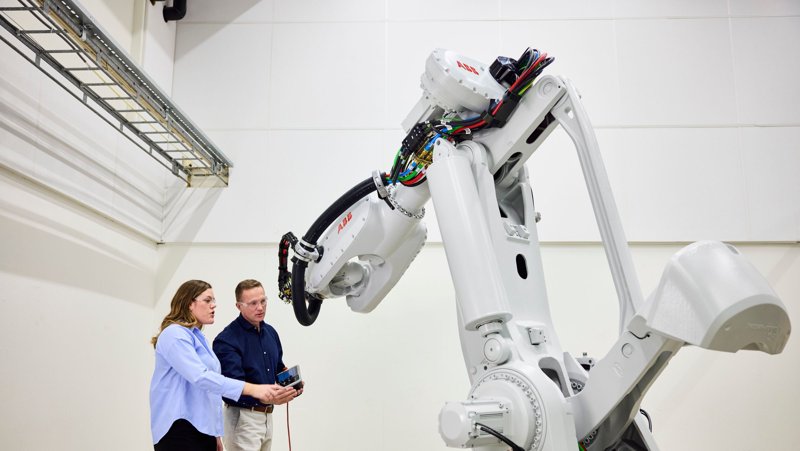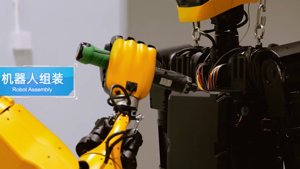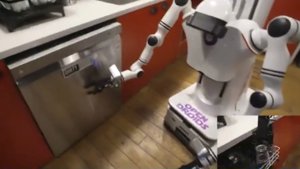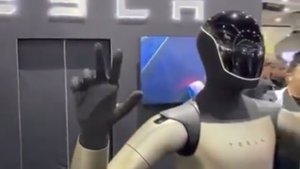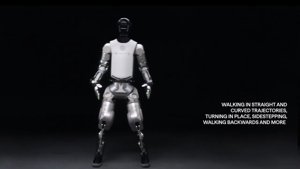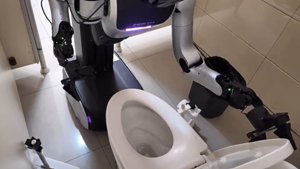In the grand, often bewildering, casino of global technology, where fortunes are won and lost with the flick of a venture capitalist’s wrist, another colossal stack of chips has just been pushed to the centre. SoftBank Group, a conglomerate whose investment strategy occasionally resembles a high-tech Rorschach test administered by a caffeinated oracle, has formally announced its definitive agreement to acquire ABB Ltd’s entire robotics division for a staggering $5.375 billion. This isn’t simply another Tuesday transaction; it’s a seismic upheaval in the automation world, a clarion call signalling that the era of polite, gentlemanly competition is definitively over. The robotics hunger games are now officially underway, with the titans of industry consolidating their power in preparation for the next brutal phase of industrial evolution.
This colossal deal, anticipated to conclude in mid-to-late 2026 following the ritualistic regulatory rubber-stamping – a process often as predictable as a British summer – will witness one of the planet’s most established industrial robotics behemoths absorbed into Masayoshi Son’s ever-expanding tech empire. For its considerable outlay, SoftBank gains ABB’s formidable portfolio: a veritable arsenal of industrial arms, nimble mobile robots, and a deep, proprietary well of automation software and cutting-edge AI-enabled machine vision technology. It marks a decidedly bold pivot for ABB, a company that had previously declared its intentions to spin off this very division. Instead, they’ve opted for a clean, albeit extremely profitable, cash exit, effectively handing the keys to a kingdom built on articulated arms and precision engineering to a new, ambitious sovereign.
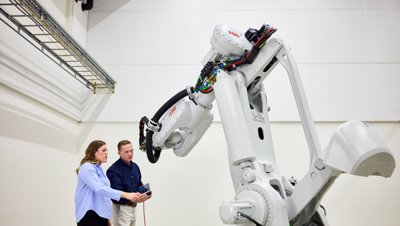
A Familiar Pattern of Conquest
If this latest manoeuvre feels eerily familiar, it’s because, frankly, we’ve witnessed this episode play out repeatedly. The robotics industry has, over the past decade, transformed into a high-stakes M&A playground – a digital gladiatorial arena where venerable legacy titans and ambitious, nimble newcomers alike are summarily snapped up, absorbed, and repurposed to serve a larger, often more ruthless, strategic purpose. This isn’t merely about procuring a new line of products; it’s about acquiring entire, intricate ecosystems: a potent blend of technology, irreplaceable talent, and crucial market access.
Consider the recent, often dramatic, history of robotic consolidation:
The KUKA Affair: Back in 2016, Chinese appliance behemoth Midea Group launched a multi-billion euro takeover bid for the venerable German robotics icon, KUKA. This audacious move sent genuine shivers of economic apprehension through Europe, a clear, unmistakable signal that the automation arms race was now truly global, with Chinese firms aggressively positioning themselves to secure vital technological expertise. Midea eventually took the company private, seamlessly integrating KUKA’s formidable industrial prowess into its own sprawling manufacturing operations.
Tesla’s Vertical Ambition: The very same year, Tesla, in a characteristic display of vertical integration zeal, acquired German manufacturing specialist Grohmann Engineering, promptly rebranding it as Tesla Grohmann Automation. This wasn’t about flogging robots to other companies; it was about the fundamental, almost philosophical, pursuit of owning “the machine that builds the machine.” Elon Musk’s explicitly stated goal was to dramatically accelerate production by bringing critical automation expertise in-house – a textbook example of controlling every single facet of manufacturing. The deal, valued at a comparatively modest $135 million, was a mere trifle for such profound control over its production destiny.
The Boston Dynamics Shuffle: Perhaps no company better encapsulates the fluctuating, yet undeniable, strategic value of high-end robotics than Boston Dynamics. The firm’s captivating journey, from an MIT spin-off to a viral video sensation showcasing dog-like robots performing alarming feats of agility, saw it initially acquired by Google in 2013, only to be offloaded to SoftBank in 2017. SoftBank, in turn, then sold a controlling 80% stake to Hyundai Motor Group in a deal that valued the company at a cool $1.1 billion in 2020. Each successive owner harboured a distinctly different vision: from a whimsical moonshot research project to a pivotal component of a future mobility and logistics empire. It’s a testament to the shifting sands of tech strategy.
The Endgame is Control
SoftBank’s bold acquisition of ABB Robotics thus slips seamlessly into this evolving, high-stakes narrative. Masayoshi Son, ever the visionary, has famously dubbed the company’s next grand frontier “Physical AI” – an ambitious push to inextricably merge advanced artificial intelligence with tangible, physical machinery. By strategically adding ABB’s formidable industrial might to its already impressive portfolio – which notably includes significant stakes in warehouse automation firm AutoStore and, indeed, its prior ownership of Boston Dynamics – SoftBank is meticulously assembling the foundational hardware backbone for this audacious vision. It represents a colossal, long-term wager: that the future of economic power will reside not merely in the ephemeral realm of software, but in the intelligent machines that robustly interact with and reshape our physical world.
This relentless, almost predatory, consolidation is driven by a stark, undeniable truth: automation is no longer a niche curiosity, confined to the repetitive drudgery of automotive assembly lines. It is rapidly becoming the critical, indispensable infrastructure for virtually everything, from the intricate ballet of e-commerce logistics and precision electronics manufacturing to the vital sectors of healthcare and agriculture. The companies that manage to own and control the dominant robotics platforms will, without question, wield immense, almost unprecedented, influence over the global economy. They are not simply selling sophisticated tools; they are, in essence, selling the very means of production itself.
As the digital dust begins to settle on this latest megadeal, the pertinent question is no longer if more acquisitions will transpire, but rather who will be the next to fall. The chessboard is meticulously set, the colossal pieces are in motion, and the dwindling number of remaining independent players are looking less like viable long-term competitors and more like exceedingly attractive targets. In this relentless, no-holds-barred race to construct the future, it appears the giants of industry have collectively decided that, when it comes to true innovation and market dominance, it is definitively better to buy than to painstakingly build.
